Plywood might seem like a humble material – flat, layered, and traditionally utilitarian – but it’s having a serious moment in contemporary design. From minimalist furniture to socially driven design projects, creatives around the world are elevating this humble sheet material into thoughtful, purpose-led work. Once seen as a purely structural material, plywood is now being embraced for its affordability, adaptability, and understated beauty.
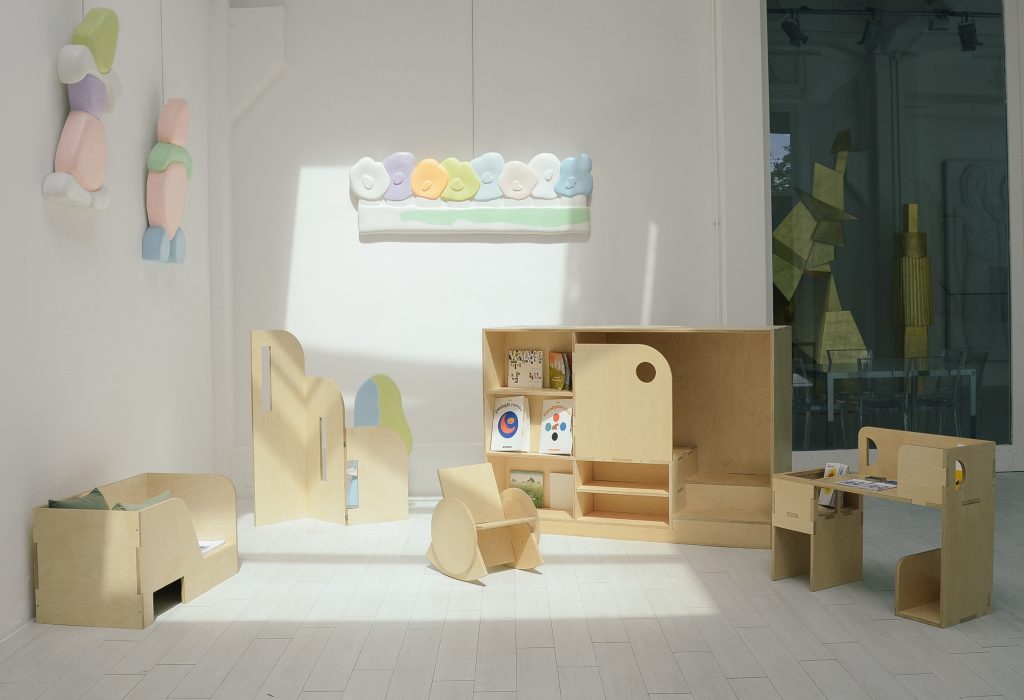
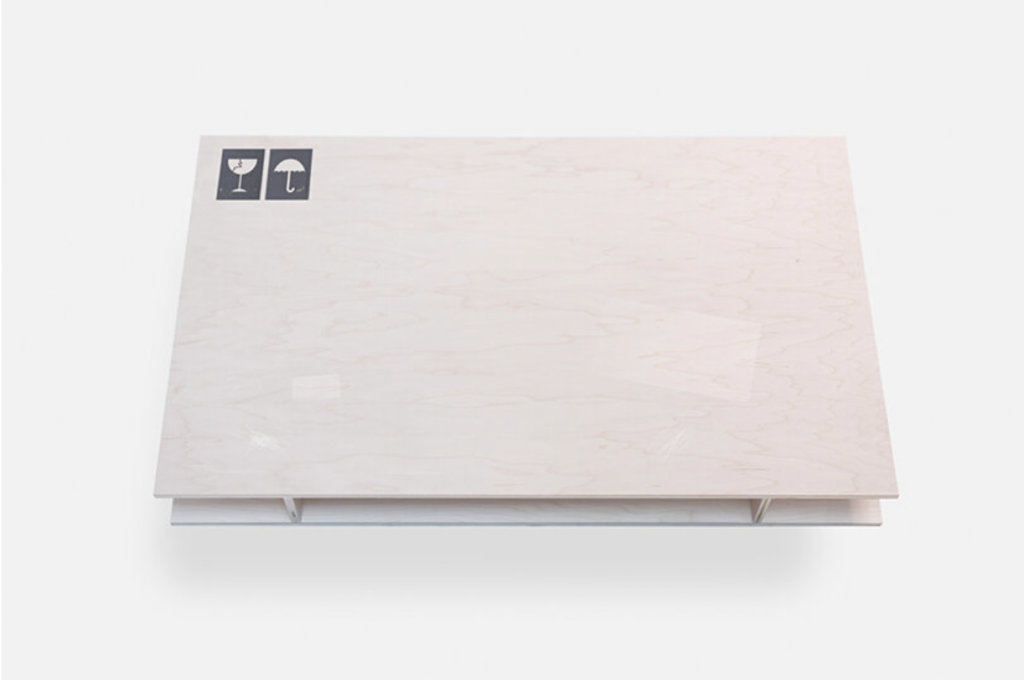
Refurbished plywood collection by HHID Studio
HHID Studio is proving that even the roughest materials can be reborn with elegance. In a recent collection, the design team has turned salvaged marine-grade plywood from high-quality shipping crates into a trio of refined furniture pieces: a bench, a coffee table, and a chair. Known for its durability and resistance to the elements, this plywood – originally intended to protect precious cargo – has found a second life as a core material for indoor living. Rather than mask its industrial origins, HHID leans into them, refining but not disguising the plywood’s rugged character.
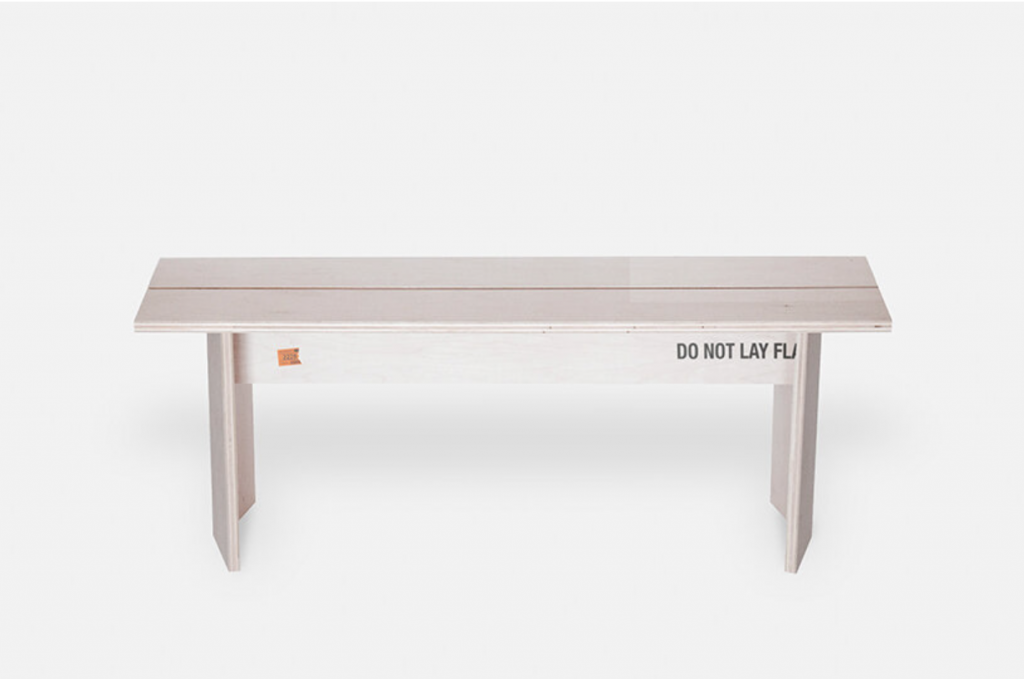
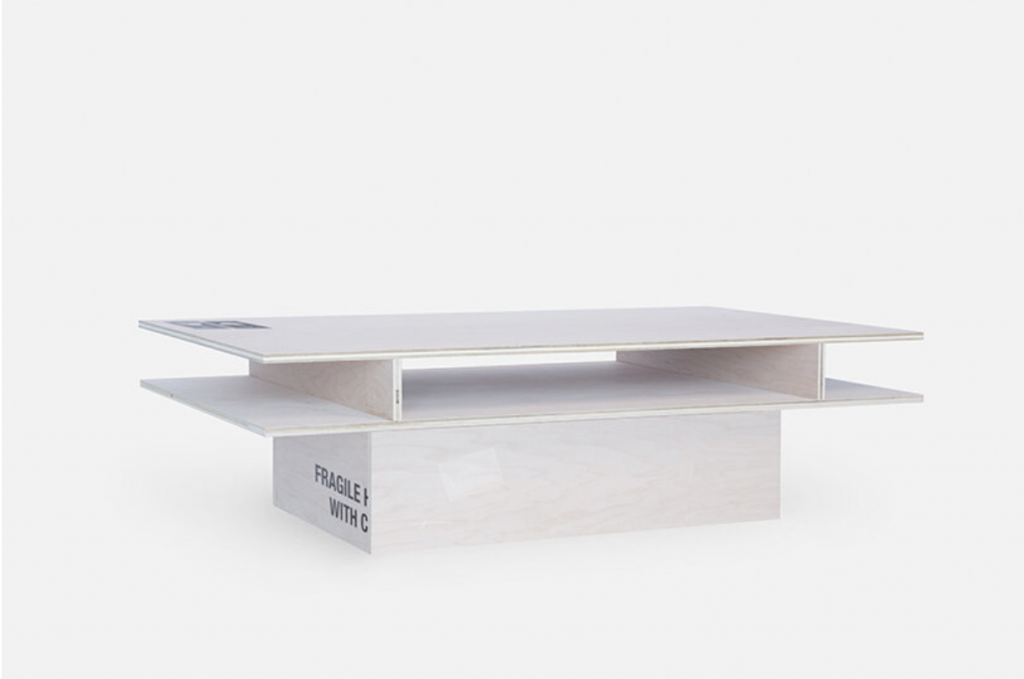
Refurbished plywood collection by HHID Studio
Drawing inspiration from brutalist architecture, the studio opts for bold, simplified forms that emphasize function over flourish. Raw, planar surfaces and visible joints echo the construction techniques used in the crates’ original fabrication, allowing the furniture to speak honestly about its past life. The design approach favors minimalism but feels anything but minimal in impact, thanks to the visual texture and patina of the reused plywood.
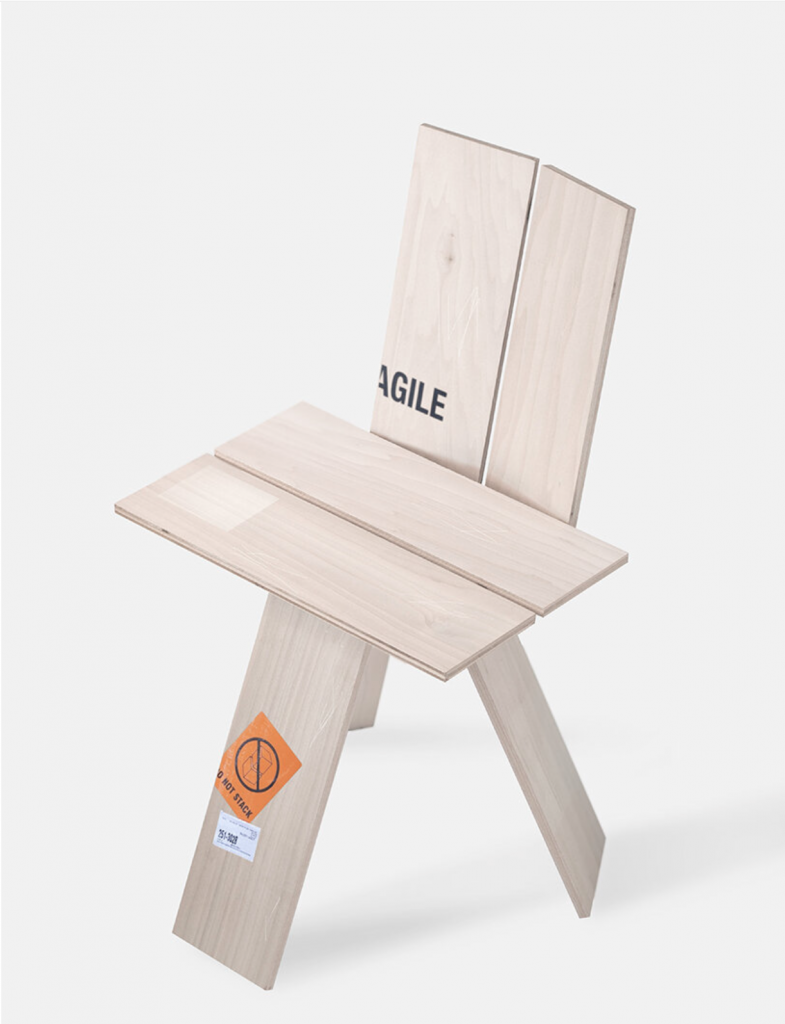
Refurbished plywood collection by HHID Studio
What makes this project stand out is not just the aesthetic but HHID’s commitment to upcycling. Their process began with a deep dive into the lifecycle of shipping containers, uncovering the immense potential locked within discarded materials. By reclaiming what would typically become waste, HHID is setting a powerful precedent for sustainable design that doesn’t sacrifice sophistication.
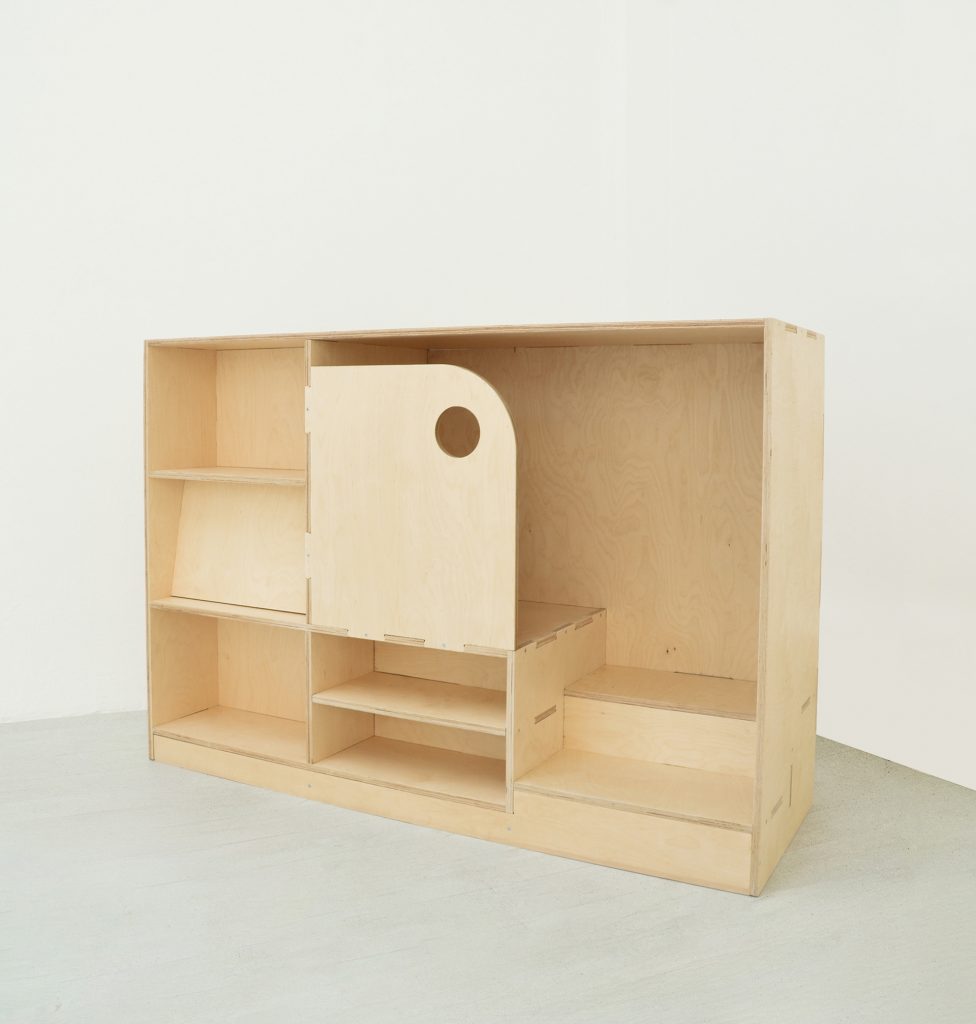
Nook by Mara Bragagnolo (also header image)
In a very different take on plywood’s potential, Italian designer Mara Bragagnolo uses it to champion inclusivity in children’s spaces. Her Nook furniture collection is flat-pack, low-cost, and highly adaptable – qualities made possible by the use of plywood and a clever, puzzle-inspired construction. Designed specifically for children on the autism spectrum, the collection includes desks, chairs, bookshelves, and sensory-friendly pieces that can be reconfigured to suit a range of individual needs.
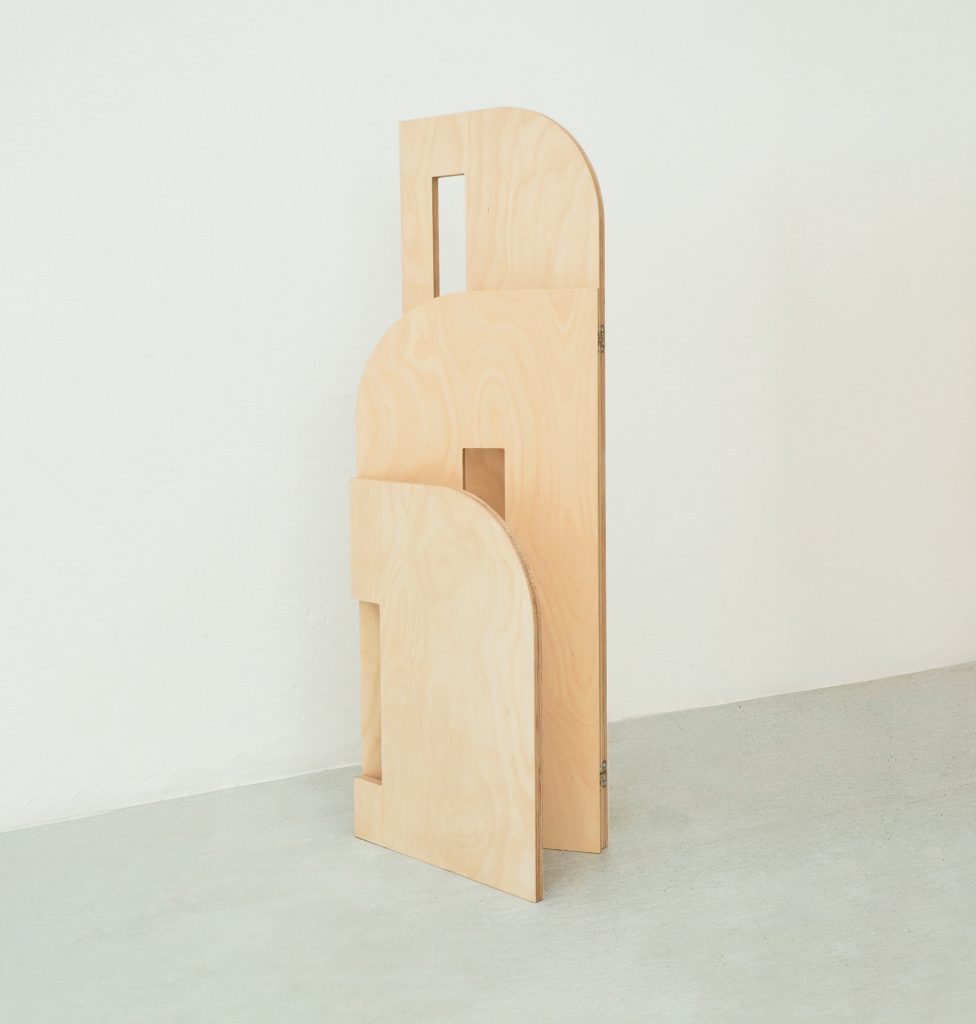
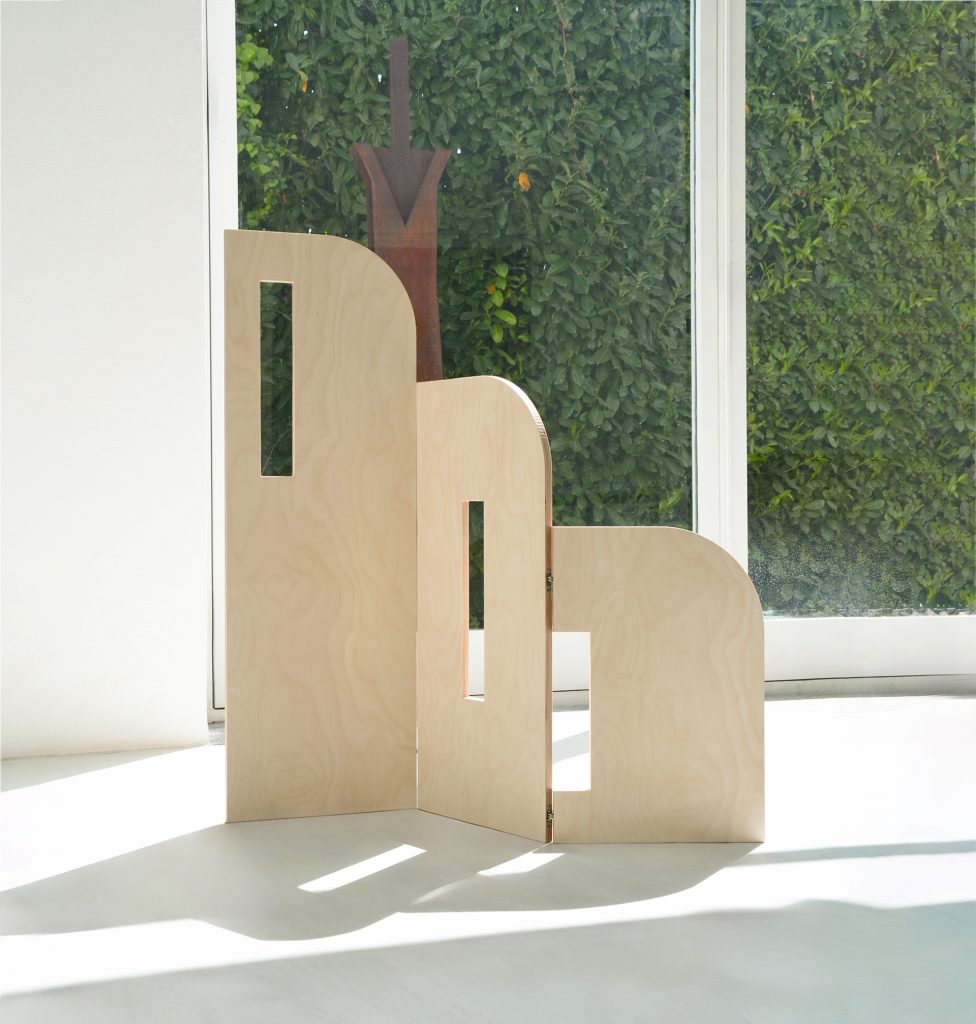
Nook by Mara Bragagnolo
Bragagnolo’s design philosophy flips traditional thinking: rather than asking people to conform to spaces, she believes spaces should adapt to people. That principle is evident in every Nook piece. The Rocking Wheel Chair promotes equality by simulating the form of a wheelchair while offering all users a calming rocking motion. The Hug Sofa references Temple Grandin’s “Hug Machine,” offering a comforting space that can be personalized with cushions for sensory support. Even a spatial divider like the Light Screen is thoughtfully crafted to shield users from direct light while still providing visual connection to the room beyond.
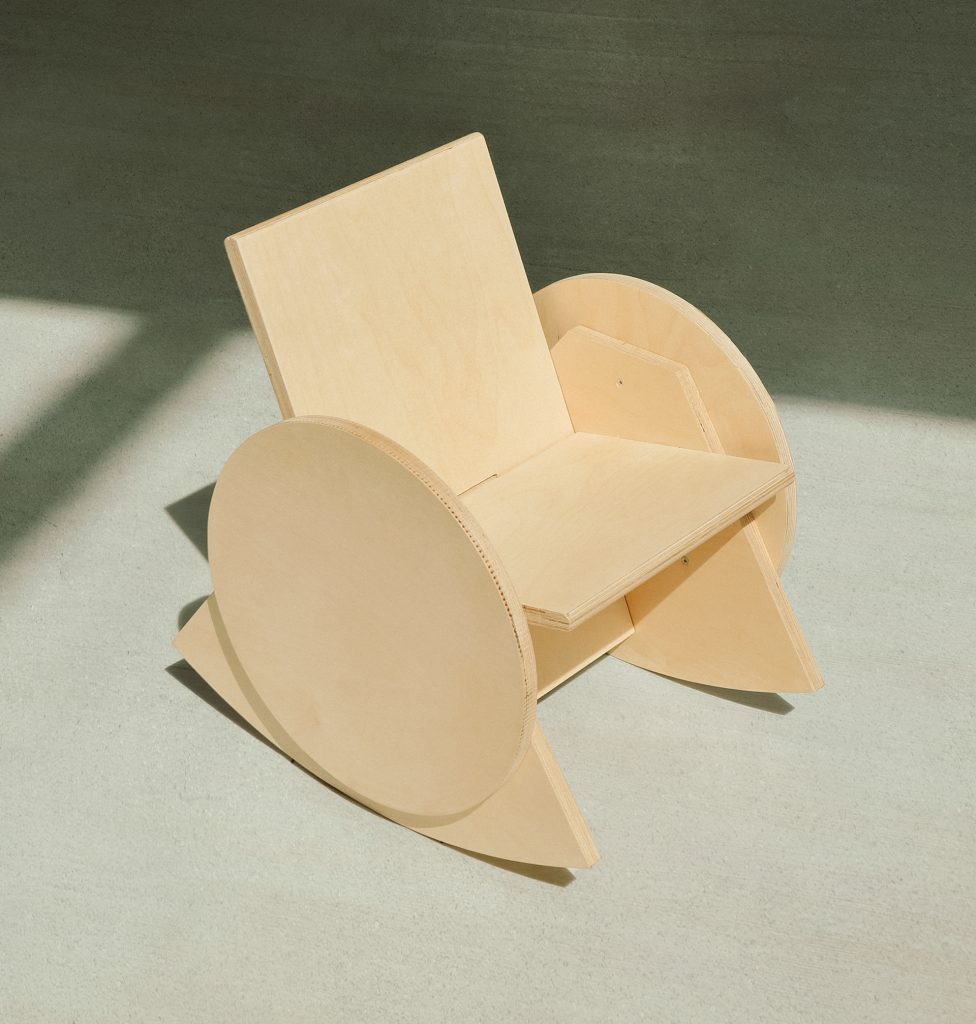
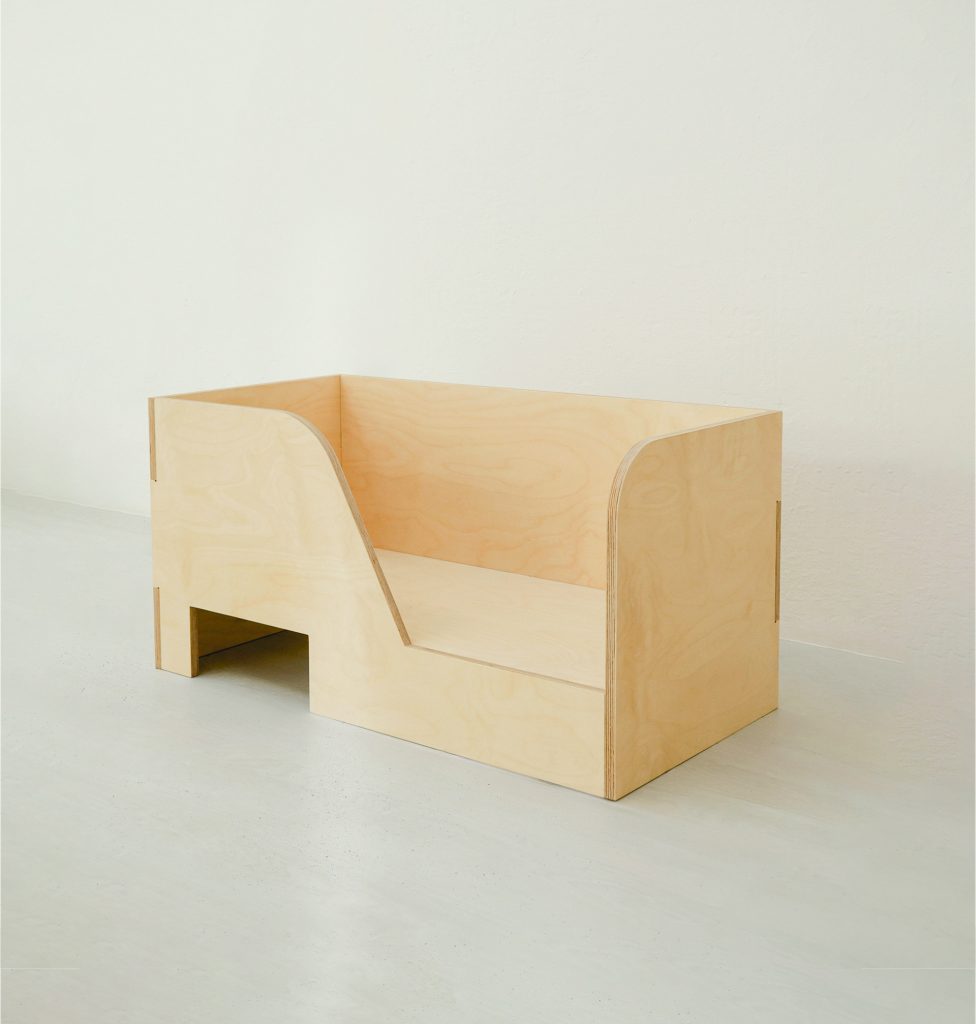
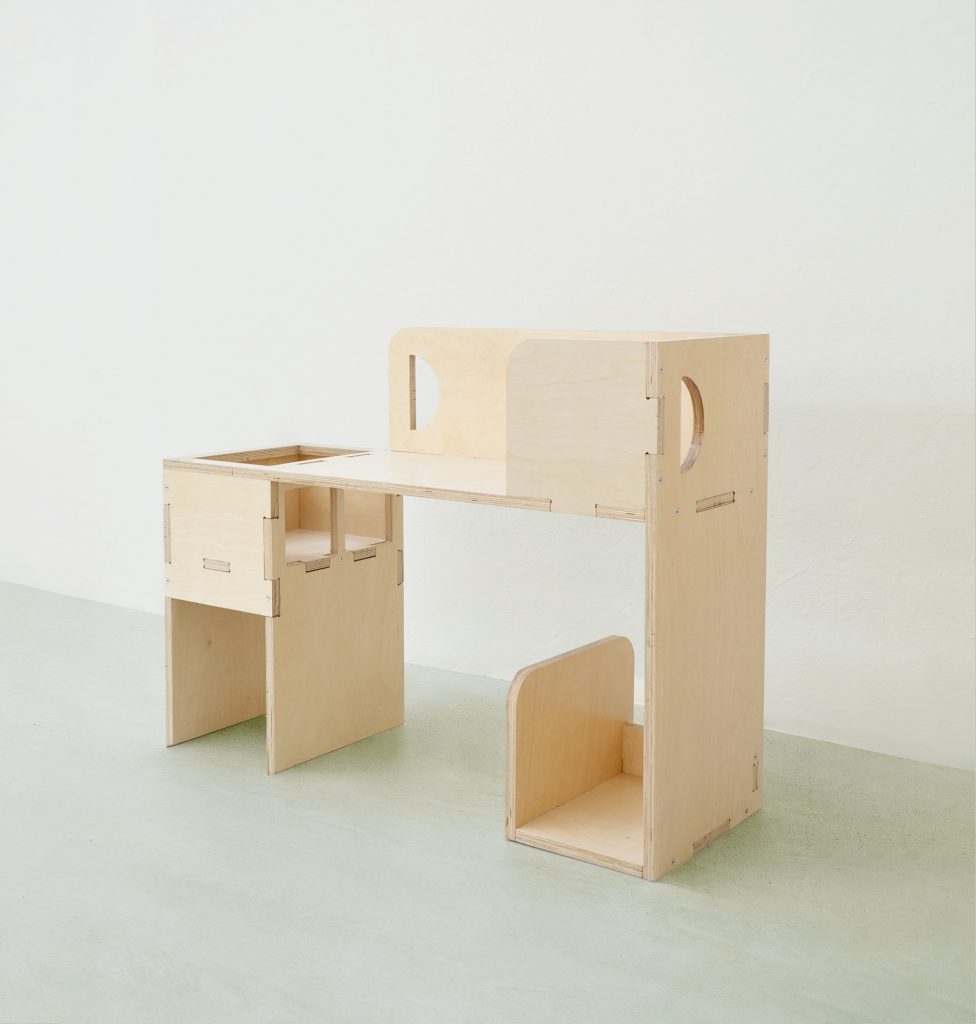
Nook by Mara Bragagnolo
The collection was developed in collaboration with architect Giancarlo Guadagno’s Not Design Lab, a workshop dedicated to socially driven, self-build projects. Although the project was initially intended for a library, Bragagnolo continued independently when funding fell through. Her dedication is personal – drawing on her own experience living with autism and consulting widely with autistic adults, children, and advocacy groups. By using plywood, Bragagnolo ensures the collection is not only adaptable and durable, but also accessible in terms of cost and assembly.
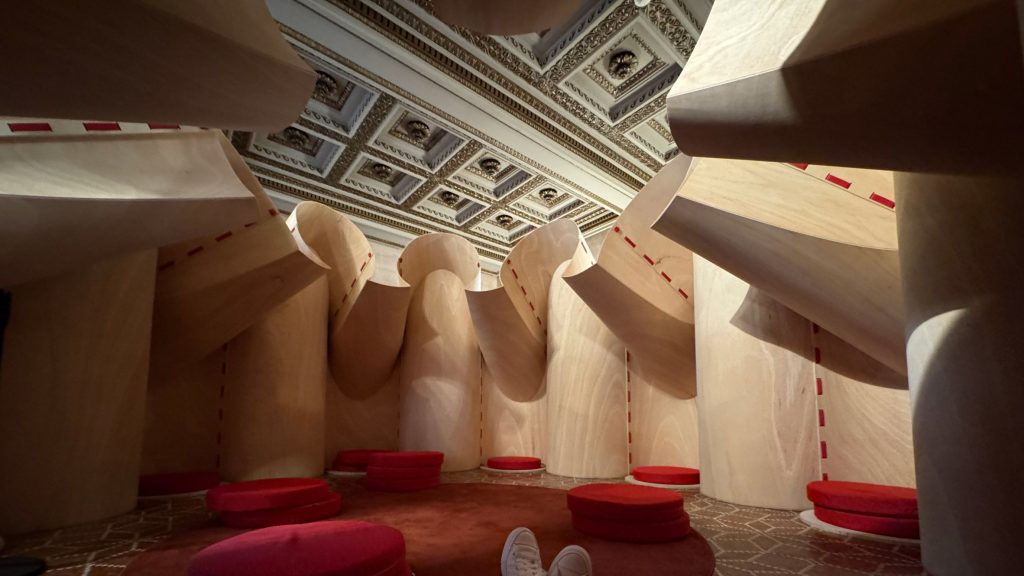
In The Round by Iman S Fayyad
At the Chicago Architecture Biennial, Massachusetts-based designer and Harvard professor Iman S Fayyad showcased a radically different use of plywood: one that curves, bends, and shelters. Her project In The Round is a temporary structure built from uncut, standardized plywood sheets, shaped into cylindrical forms and fastened with fabric straps – no adhesives, no nails, no hardware. The installation is equal parts sculpture and shelter, a “collective space” that invites both contemplation and congregation.
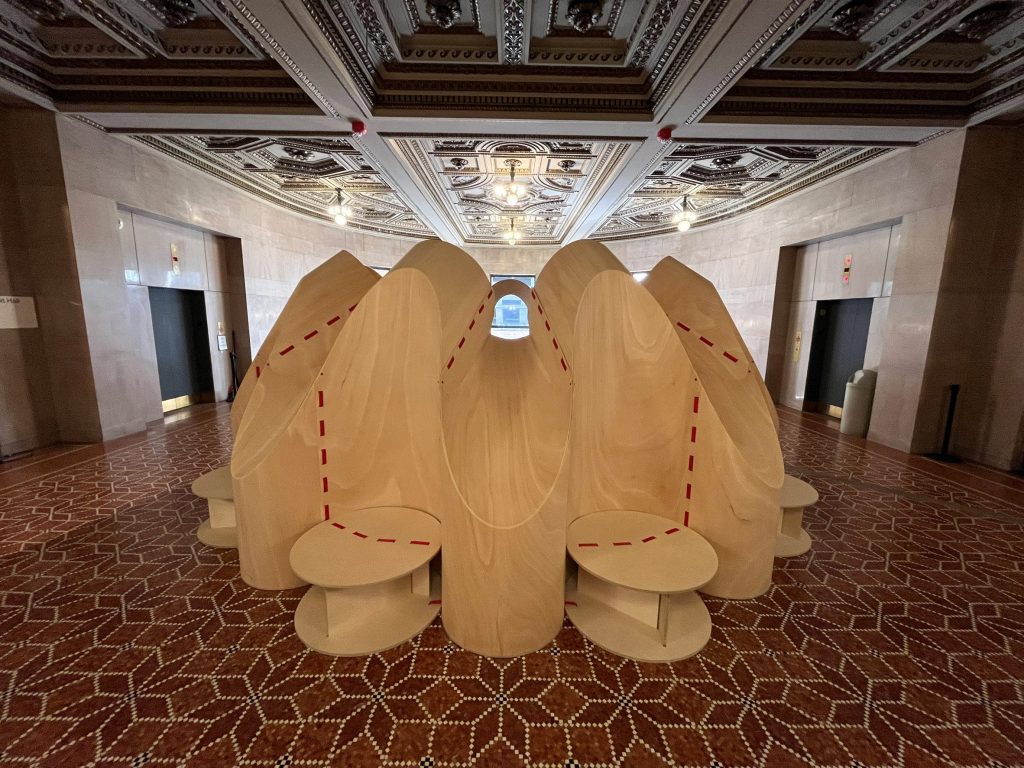
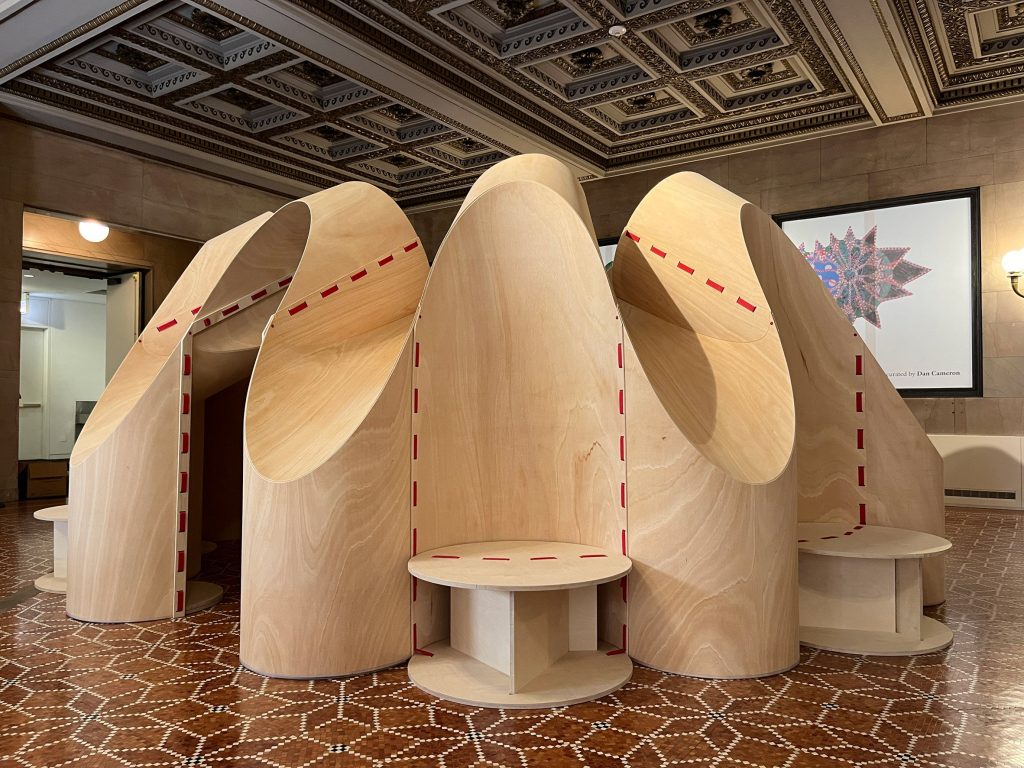
In The Round by Iman S Fayyad
Fayyad’s process transforms the plywood from flat sheets into curved enclosures using only heat, water, and hand labor. Once bent, the forms are stitched together with straps that double as structural joinery. The result is a graceful dome-like space with internal alcoves and a central oculus, creating an architectural experience that feels both intimate and open. It’s a striking example of how modest materials can take on poetic form with minimal intervention and maximal intent.
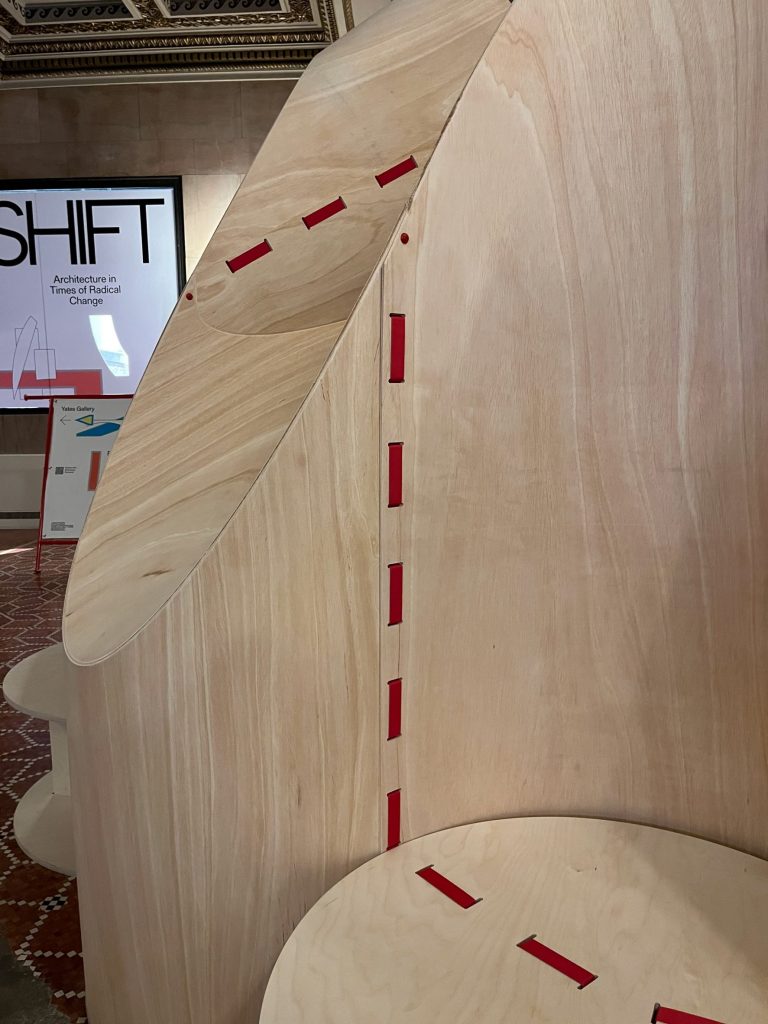
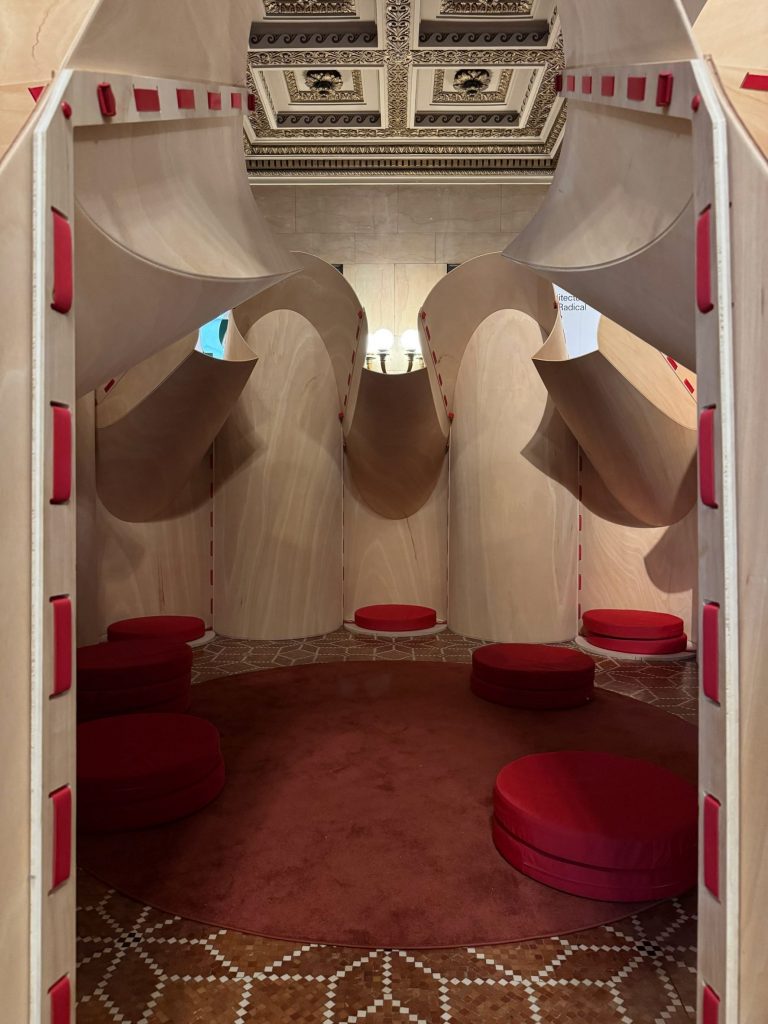
In The Round by Iman S Fayyad
More than just an aesthetic experiment, In The Round responds to urgent architectural questions: How can we build quickly, affordably, and with minimal waste? How can temporary infrastructure – like shade structures or emergency shelters – be both functional and beautiful? Fayyad’s answer lies in rethinking how we treat materials and who gets to use them. By using off-the-shelf plywood and no specialized tools, she makes a compelling case for democratized architecture that empowers communities rather than imposing on them.